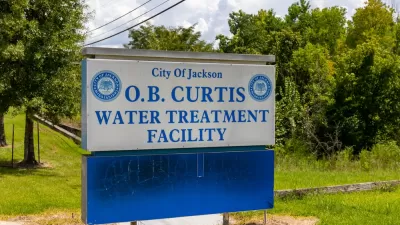Pretty Prairie has water with very high levels of nitrates, and lots of farmers that need to use nitrates if they want to keep the local economy going.

This month’s issue of Harper’s has a long piece by Elizabeth Roye that’s worth reading just for its exploration of how difficult it is for rural areas to provide clean drinking water for their small populations when their way of life is already threatened.
It takes place in Pretty Prairie, Kansas, where the content of nitrates in the water—due to fertilizer used on farmland that comprises over 90 percent of the land—has, for decades, exceeded the limits established by the EPA.
A reverse-osmosis plant has always been only barely feasible economically, but as Royte learns, trying to get the farmers to stop using as much fertilizer is an equally challenging proposition: “Less fertilizer means lower yields, and if farmers earn less, they might default on loans, exacerbating the shrinking of the town.”
In the end, a place with 320 ratepayers has now borrowed enough to build a plant that can remove nitrates from the water, and the town clerk tells Royte, with relief, that they will never have to worry about water again.
“That may be true,” Royte writes, “but I suspected Brace’s sense of relief—and the community’s—was related more to social, rather than civil, engineering. A decision had been made: the farmers would do their best, within the bounds of their economies, and the townsfolk—with a onetime boost from the feds—would continue uncomplainingly to clean up after them.”
FULL STORY: Drinking Problems

Alabama: Trump Terminates Settlements for Black Communities Harmed By Raw Sewage
Trump deemed the landmark civil rights agreement “illegal DEI and environmental justice policy.”

Study: Maui’s Plan to Convert Vacation Rentals to Long-Term Housing Could Cause Nearly $1 Billion Economic Loss
The plan would reduce visitor accommodation by 25% resulting in 1,900 jobs lost.

Why Should We Subsidize Public Transportation?
Many public transit agencies face financial stress due to rising costs, declining fare revenue, and declining subsidies. Transit advocates must provide a strong business case for increasing public transit funding.

Paris Bike Boom Leads to Steep Drop in Air Pollution
The French city’s air quality has improved dramatically in the past 20 years, coinciding with a growth in cycling.

Why Housing Costs More to Build in California Than in Texas
Hard costs like labor and materials combined with ‘soft’ costs such as permitting make building in the San Francisco Bay Area almost three times as costly as in Texas cities.

San Diego County Sees a Rise in Urban Coyotes
San Diego County experiences a rise in urban coyotes, as sightings become prevalent throughout its urban neighbourhoods and surrounding areas.
Urban Design for Planners 1: Software Tools
This six-course series explores essential urban design concepts using open source software and equips planners with the tools they need to participate fully in the urban design process.
Planning for Universal Design
Learn the tools for implementing Universal Design in planning regulations.
Smith Gee Studio
Alamo Area Metropolitan Planning Organization
City of Santa Clarita
Institute for Housing and Urban Development Studies (IHS)
City of Grandview
Harvard GSD Executive Education
Toledo-Lucas County Plan Commissions
Salt Lake City
NYU Wagner Graduate School of Public Service



























